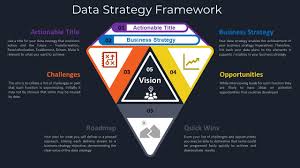
The Importance of Data Strategy in Today’s Business Landscape
In today’s digital age, data has become one of the most valuable assets for businesses across all industries. With the exponential growth of data being generated and collected, organizations need to have a well-defined data strategy in place to effectively manage, analyze, and leverage this valuable resource.
A solid data strategy involves a comprehensive plan that outlines how an organization will collect, store, process, and utilize data to drive business success. It encompasses various aspects such as data governance, data quality management, data security, analytics capabilities, and more.
Having a robust data strategy offers numerous benefits to businesses. It enables organizations to make informed decisions based on accurate and timely insights derived from data analysis. By harnessing the power of data effectively, companies can gain a competitive edge, identify new opportunities for growth, optimize operations, and enhance customer experiences.
Furthermore, a well-implemented data strategy enhances organizational efficiency by streamlining processes related to data management and ensuring compliance with regulatory requirements. It also fosters a culture of data-driven decision-making within the organization, empowering employees at all levels to leverage data for improved performance.
As businesses continue to digitize their operations and embrace technologies such as artificial intelligence and machine learning, the role of an effective data strategy becomes even more critical. Organizations that invest in developing and executing a comprehensive data strategy are better positioned to navigate the complexities of the digital landscape and capitalize on the vast potential that data holds.
In conclusion, in today’s fast-paced business environment where data is king, having a well-defined data strategy is not just advantageous but essential for long-term success. By prioritizing the development of a robust data strategy, organizations can unlock the full potential of their data assets and drive innovation, growth, and competitiveness in an increasingly data-driven world.
Understanding Data Strategy: Pillars, Components, Key Principles, and Big Data Approaches
- What are the pillars of data strategy?
- What are the 5 components of data strategy?
- What are the key principles of data strategy?
- What are the four big data strategies?
What are the pillars of data strategy?
When discussing the pillars of data strategy, it is essential to highlight the key foundational elements that form the core of a successful data strategy framework. The pillars typically encompass aspects such as data governance, data quality management, data analytics and insights, data security and privacy, and data infrastructure. Each pillar plays a crucial role in shaping how an organization collects, manages, analyzes, and utilizes its data assets to drive informed decision-making and achieve business objectives. By establishing strong pillars of data strategy, organizations can build a solid foundation for harnessing the power of data to drive innovation, efficiency, and competitive advantage in today’s data-centric business landscape.
What are the 5 components of data strategy?
When discussing the components of a data strategy, it is essential to consider five key elements that form the foundation of an effective data strategy. These components typically include data governance, data quality management, data architecture, data analytics, and data security. Data governance establishes the rules and processes for managing and utilizing data effectively within an organization. Data quality management ensures that the data being collected and used is accurate, reliable, and consistent. Data architecture defines how data is organized, stored, and accessed across systems. Data analytics involves extracting insights from data to drive decision-making and business outcomes. Lastly, data security focuses on protecting sensitive information from unauthorized access or breaches, ensuring the confidentiality and integrity of data assets. By addressing these five components comprehensively in a data strategy, organizations can optimize their use of data to drive innovation and achieve strategic objectives.
What are the key principles of data strategy?
When exploring the key principles of data strategy, it is essential to emphasize several fundamental aspects that form the foundation of an effective data strategy. These principles typically include defining clear objectives and goals aligned with business priorities, establishing robust data governance practices to ensure data quality and compliance, implementing scalable infrastructure for data storage and processing, fostering a culture of data literacy and collaboration across the organization, leveraging advanced analytics and technology to derive actionable insights, and continuously evaluating and adapting the strategy to meet evolving business needs. By adhering to these core principles, organizations can develop a comprehensive data strategy that drives innovation, enhances decision-making capabilities, and maximizes the value of their data assets.
What are the four big data strategies?
When it comes to big data strategies, organizations often focus on four key approaches to effectively manage and leverage their data assets. These strategies include data collection and storage, data processing and analysis, data visualization and interpretation, and data-driven decision-making. By implementing a comprehensive approach that encompasses these four pillars, businesses can harness the power of big data to gain valuable insights, drive innovation, optimize operations, and stay ahead in today’s competitive landscape.
